Marukin Six Sided Eyedropper Fountain Pen c. 1920s
by Jim Mamoulides, December 22, 2023
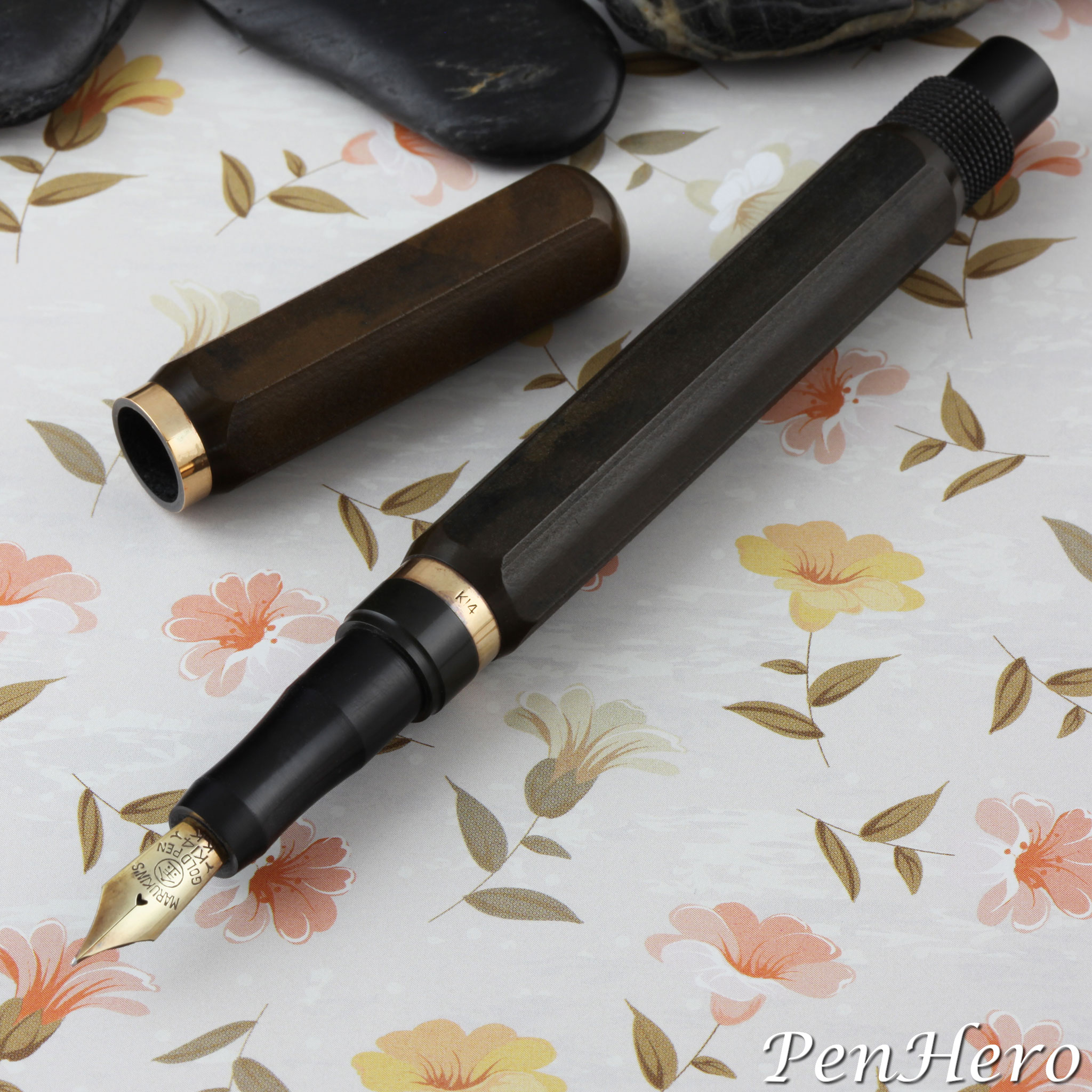 Marukin six sided eyedropper fountain pen c. 1920s
Marukin six sided eyedropper fountain pen c. 1920s
How Early Is This Marukin?
This unusual clipless six sided hard rubber Marukin eyedropper filler brings to mind eyedropper pens made in the United States and England from the early 1900s to 1920s. A review of very early Japanese eyedropper pens from the 1910s shows a variety of round cap and barrel pens with short friction fit caps that post onto a knobbed barrel end, a design evidently copied from early Onoto and Swan eyedropper pens imported to Japan. Many variations of the round barrel type can be seen in the catalogs of several Japanese pen makers into the very early 1920s.
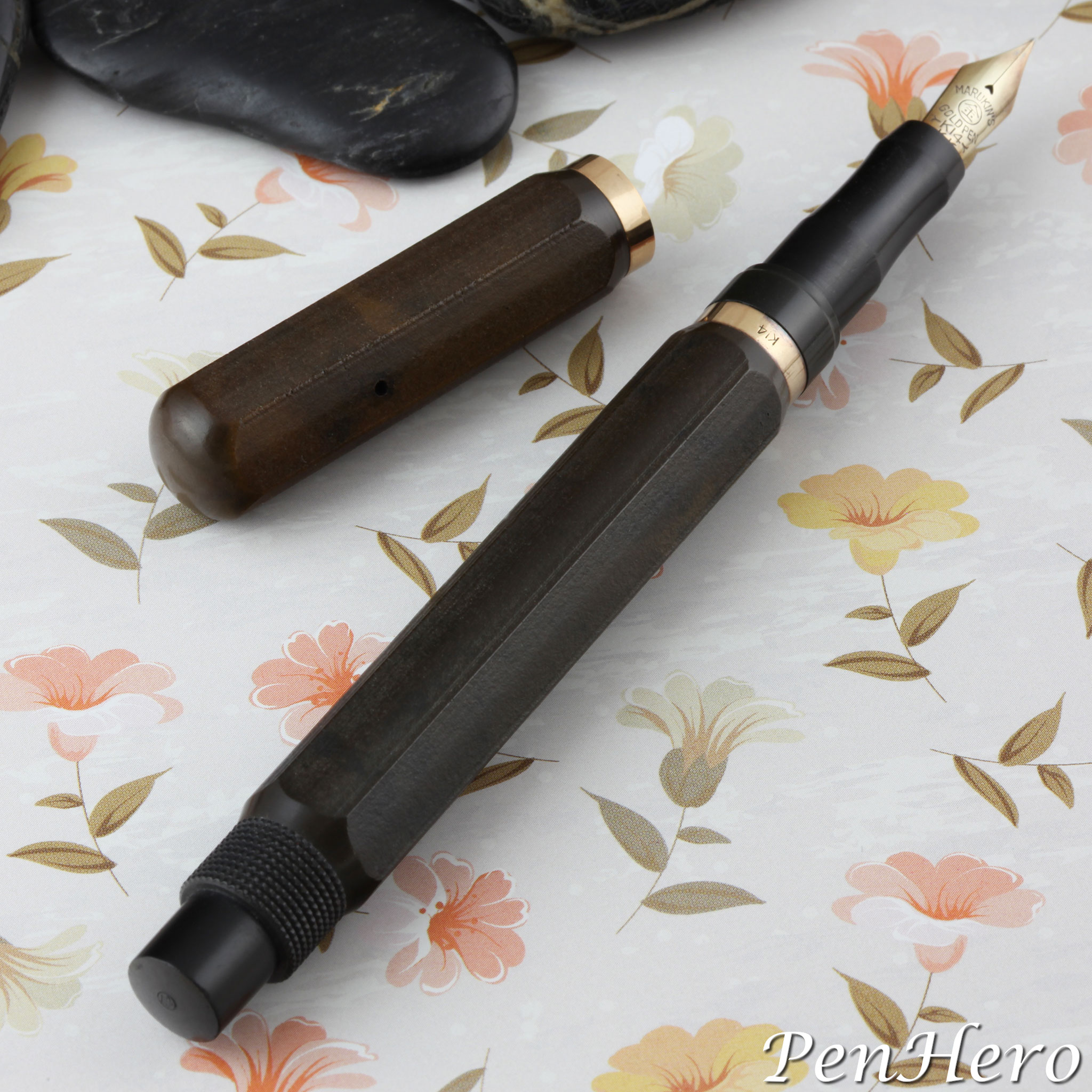 Marukin six sided eyedropper fountain pen c. 1920s
Marukin six sided eyedropper fountain pen c. 1920s
Early Japanese eyedropper pens, like those made in the United States and England, are filled by removing the nib section, putting ink directly into the barrel, replacing the nib section and writing. This Marukin works the same way. Later Japanese eyedropper pens use a "safety shut off" or “ink stop” mechanism, a feature nearly unique to Japan, and therefore have a movable, usually threaded, end cap. Safety shut off pens operate by removing the nib section, filling the barrel with ink using an eyedropper, replacing the section back on the barrel, and then slightly opening the end cap to allow ink flow to the nib in order to write.
This also is not a typical Marukin, based on the few that I have seen. Most Marukin pens are safety shut off eyedropper pens that have clips on the threaded cap and are noted for their beautiful mottled hard rubber, though there are black hard rubber pens. This Marukin pen is 5 3/4 inches long capped and a very long 7 1/8 inches with the cap posted on the end of the barrel. The cap is a slip on friction fit type, another clue that the pen may be an earlier design. It also has an interesting hobnail grip section at the barrel end, also seen on other early eyedropper pens. The hard rubber was probably originally black and is not urushi coated. The resulting shades of brown from aging are actually quite attractive.
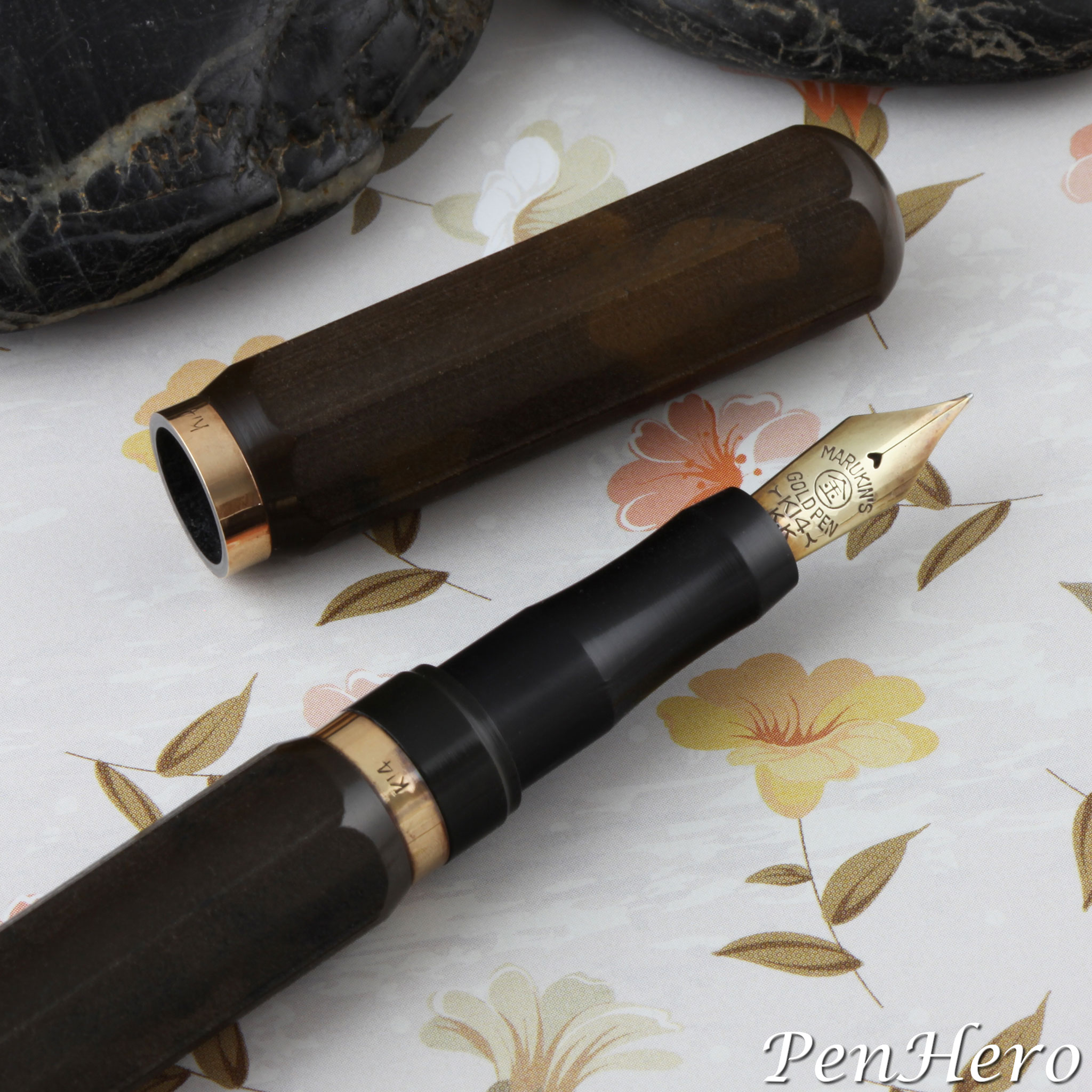 Marukin six sided eyedropper fountain pen c. 1920s
Marukin six sided eyedropper fountain pen c. 1920s
The trim, a wide cap and barrel band, near where each meets when the pen is capped, is stamped K14 indicating it is likely solid gold instead of rolled gold. Rolled gold would be stamped R14K. The six sided cap and barrel come together creating a very narrow “waist” where they meet, giving the pen an unusual look when capped. The shape and feel in the hand is similar to holding a larger diameter wooden pencil. It also makes the pen stay in place on the desk when not in use.
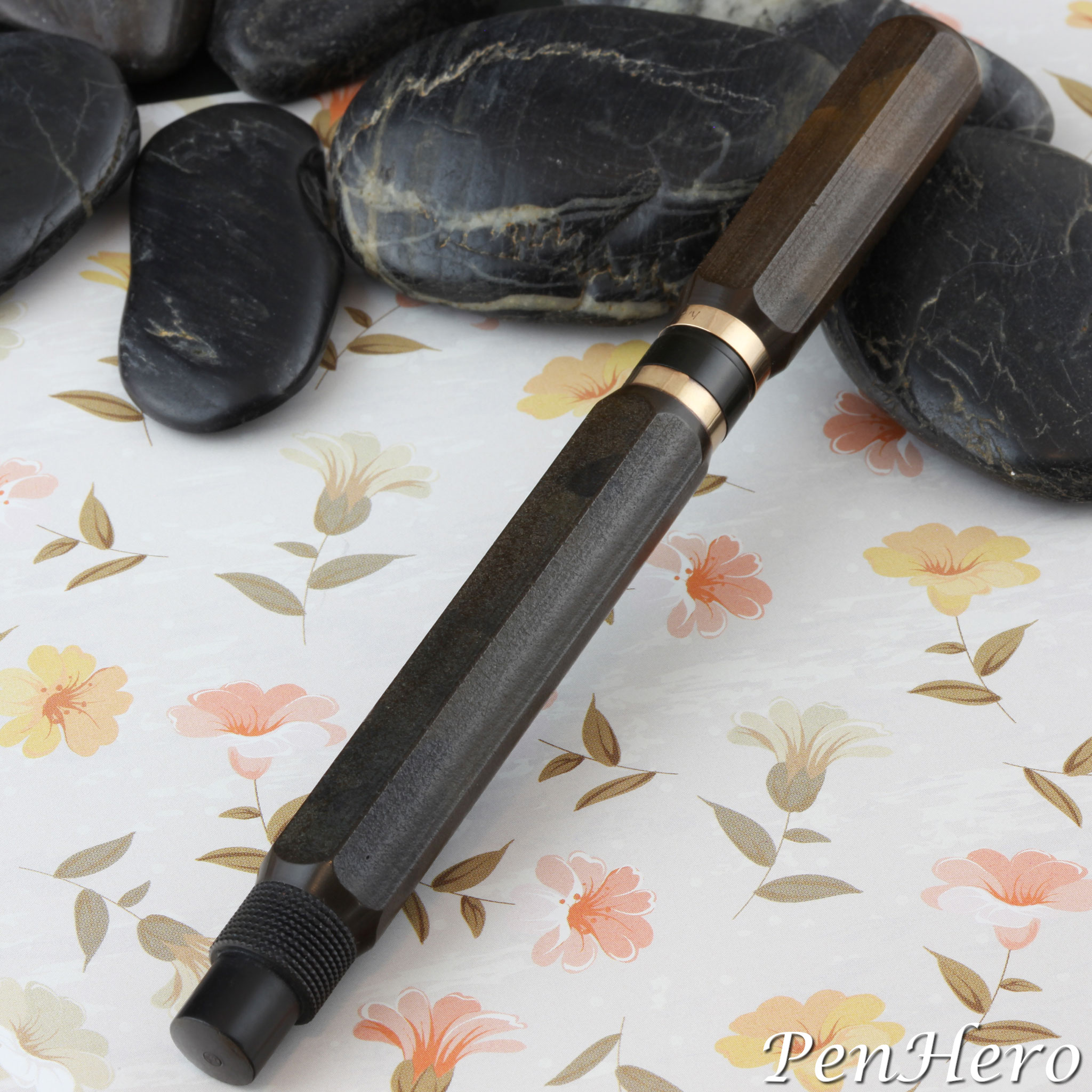 Marukin six sided eyedropper fountain pen c. 1920s
Marukin six sided eyedropper fountain pen c. 1920s
It's fitted with a semi flexible 14 karat gold Marukin nib stamped MARUKIN’S over GOLD PEN over K14 over K.K. with the Marukin logo. Marukin either made their own nibs or had them specially made with their company information stamped on them, a very uncommon and more costly practice in among the many early Japanese pen makers.
It’s a traditional eyedropper pen that fills by unscrewing and removing the nib section and dripping ink into the barrel using a long eyedropper.
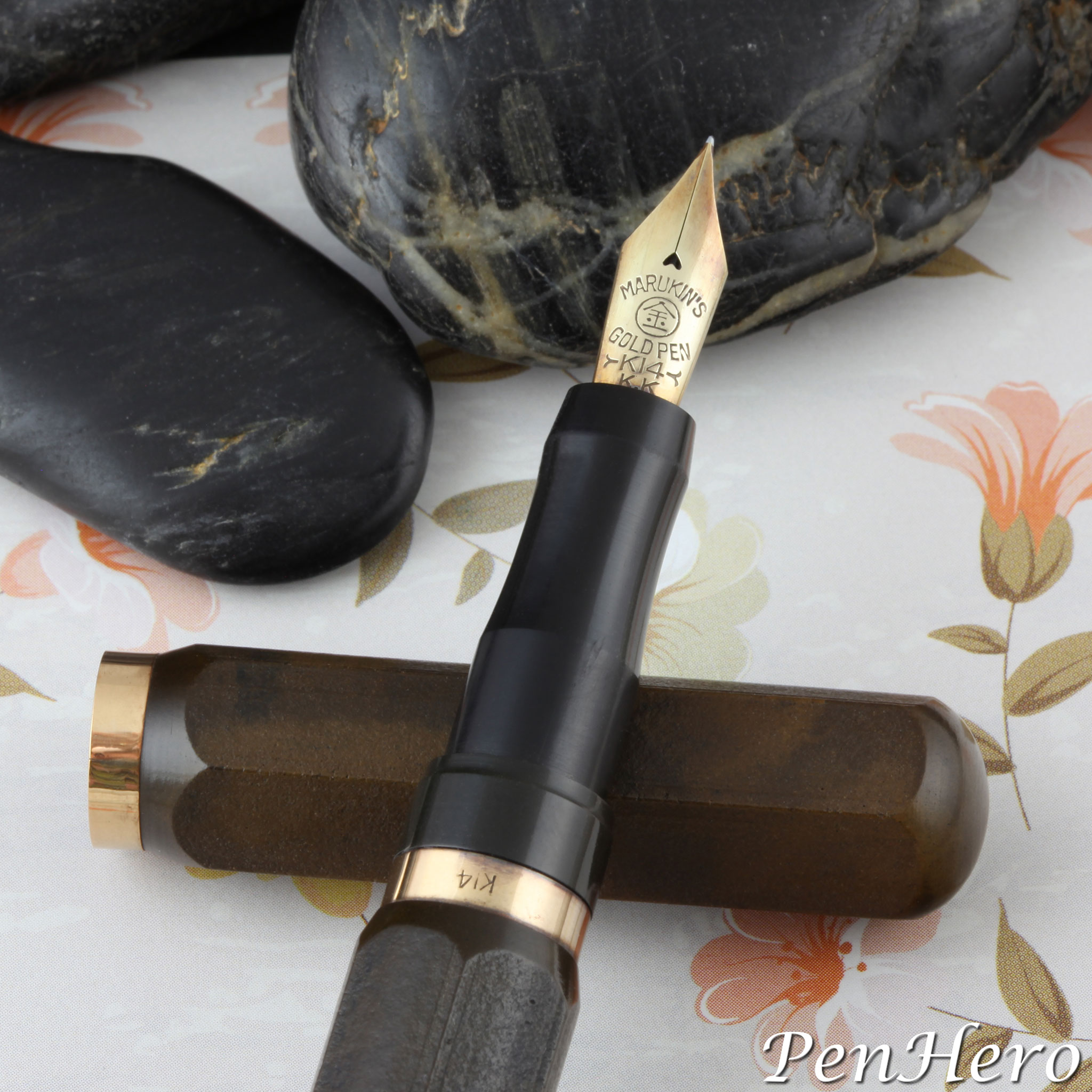 Marukin six sided eyedropper fountain pen c. 1920s
Marukin six sided eyedropper fountain pen c. 1920s
Marukin was a small high quality pen maker based in Osaka, Japan, known for its high quality hard rubber fountain pens and many sources indicate that the company may have only operated in the 1930s, though this pen raises a question about that. By the 1930s there were hundreds of small pen making shops in Osaka and Tokyo. Many made and decorated their own caps and barrels, purchasing the rest of the pen parts from specialty parts houses and nib makers. Marukin pens were made by Kinichiro Kasahara and are somewhat rare. This pen is therefore a puzzle given the earlier looking design and lack of ink shut off. Based on the design, I’m going to say it’s probably from the 1920s. The other possibility is that it was made specially for a customer that wanted this type.
As stated in my other Marukin articles, not a lot is known about the history of Marukin pens, with very little information in English in print or on the internet, and the company is not mentioned in Fountain Pens of Japan, for example. Because there is no information on this particular pen model, there will not be an identification guide. Also, the pen was loaned for photos and not used, so there will not be a performance section. If the reader has more information on Marukin it would be appreciated.
Marukin fountain pens are high quality early Japanese pens and most examples I’ve seen are from the 1930s. They are very uncommon in the United States and very little has been written about them in English. As with others I’ve reviewed, this Marukin eyedropper pen is very well made and an unusual design.
Acknowledgements
Thanks to Stan Klemanowicz for loaning this pen for photographs. Thanks to Chris Nippert for providing additional information and translation of Marukin materials.
References
“Collecting Japanese Pens” by Stan Klemanowicz, The Pennant, Winter 2006
Fountain Pens of Japan by Andreas Lambrou and Masamichi Sunami, © 2012 Andreas Lambrou Publishers, Epping, Essex, United Kingdom
"Marukin" Company Web Page, Copyright © Morita Co., Ltd.
Interact
Comments on this article may be sent to the author, Jim Mamoulides


